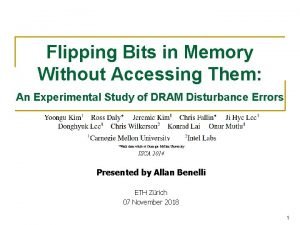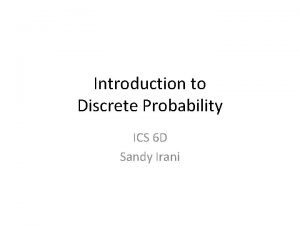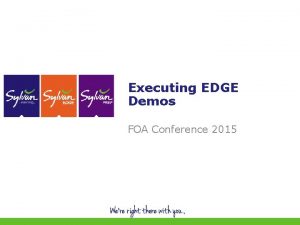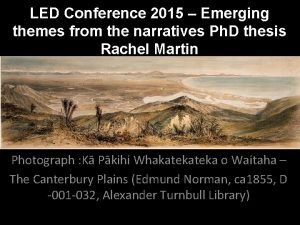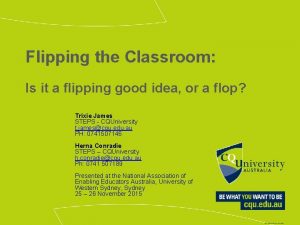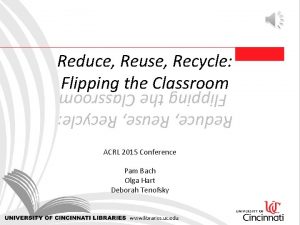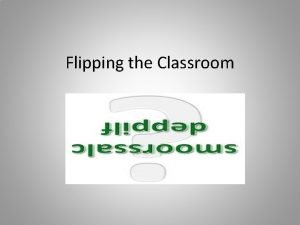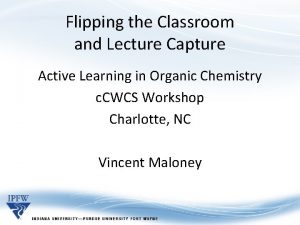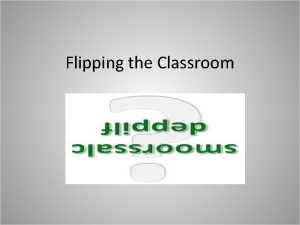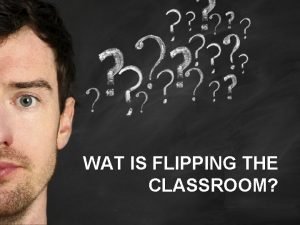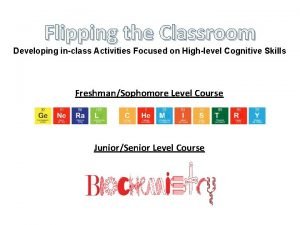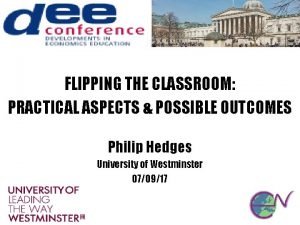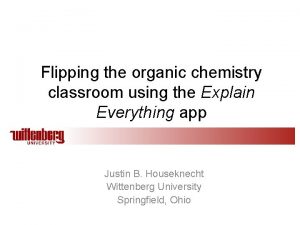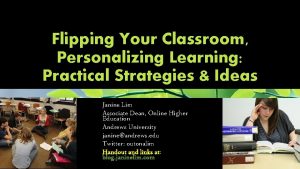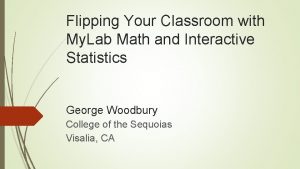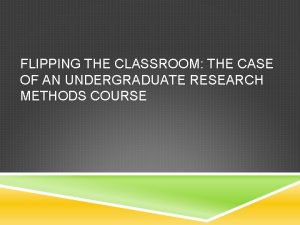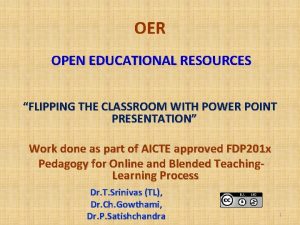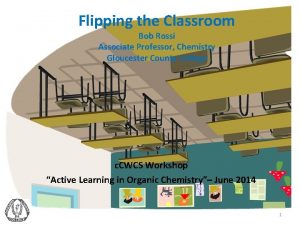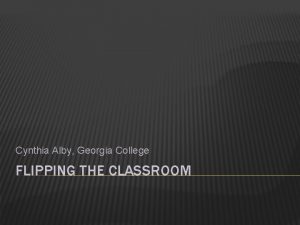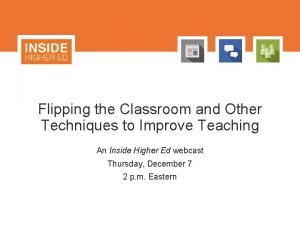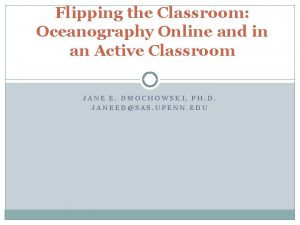A P T CONFERENCE 2015 FLIPPING THE CLASSROOM































- Slides: 31

A. P. T. CONFERENCE 2015, FLIPPING THE CLASSROOM 7 TH JULY 2015 University of Greenwich, London, UK

A GROUNDED THEORY DESIGN AND IMPLEMENTATION OF A COURSE TO SUPPORT STUDENTS WITH DISABILITIES USING TABLET COMPUTERS AND SMARTPHONES AT THE LONDON SCHOOL OF ECONOMICS AND CANTERBURY CHRIST CHURCH UNIVERSITY, UK Simon Hayhoe, (Canterbury Christ Church University / London school of Economics) Kris Roger (London School of Economics) Sebastiaan Eldritch-Boersen (London School of Economics) Linda Kelland (London School of Economics)

INTRODUCTION The reason for the study, aims and objectives

THE MOTIVATION FOR THE STUDY • The Disabled Students Allowance (DSA) - grant for students aged 18 years and over in English and Welsh higher education • Amongst other things, supports provision of assistive technologies • April 2014 – England & Wales Minister for Universities and Science proposed cuts to DSA • A number of universities are already preparing alternative means to support disabled students in future

AIMS & OBJECTIVES OF THE STUDY Investigate alternative to assistive technologies Develop education on mainstream technologies Evaluate devices, and how to employ them Explore the most effective training

CONTEXT OF THE STUDY Literature and policies that provide context to the study

METHODOLOGY OF STUDY & DESIGN A Grounded Methodology approach

GROUNDED THEORY CYCLE OF ANALYSIS Selective Coding: Evaluation of course & Material available through Moodle Initial, unrefined hypothesis developed at this stage Open Coding: Initial examination of theories & evaluation of mobile devices Axial Coding: Staff and student consultation & Design of curriculum

OPEN CODING Initial pilot phase of study

SAMR PYRAMID OF INCLUSION Traditional Separate Assistive Technology Inclusive Technology

INCLUSIVE TECHNICAL CAPITAL (ITC) MODEL “Inclusive technical capital can be defined as practice which uses inclusive mainstream technologies to promote inclusion in further forms of social, cultural and financial capitals, through enabled habitus in education and training. ” Hayhoe, S. (in press). A position paper on the development of inclusive technical capital by students with disabilities through the use of mobile technologies, In A. Robertson with R. Jones-Parry (Eds. ). Commonwealth Education Partnerships: 2015/16. Cambridge: Commonwealth Secretariat & Nexus Strategic Partnerships.

SUMMARY OF FINDINGS OF THE EVALUATION OF APPLE IOS ANDROID Both systems have relatively similar inclusive accessible settings Have similar potential for enhancement rather than transformation of tasks Both operating systems still need to develop their functions

AXIAL CODING PHASE Staff and student consultations

CONSTRUCTION OF SURVEYS AND CONSULTATION Initial surveys of students (n = 18) and staff (n = 34) Not statistically significant Discussions conducted between key personnel Support for neuro-diverse student LTI Officers assistive technologies

AN OVERWHELMING MAJORITY OF DISABLED STUDENTS USE MOBILE DEVICES Do any of your disabled or neuro-diverse students use mobile devices, such as smart phones or tablets (e. g. i. Phone, Samsung Galaxy, i. Pad, Kindle) in your class to, for example, record your lecture, or enlarge text? 92 100 90 80 70 60 50 40 30 8 20 10 0 Yes No

MOSTLY PAPER BASED MATERIALS ARE MADE AVAILABLE AFTER LECTURES, ELECTRONIC MATERIAL LESS SO What materials are available to your students AFTER lectures? 37 40 35 30 21 25 20 16 16 15 5 10 5 5 0 0 Lecture Video Voice Graphics in Data in notes in recordings of electronic paper format electronic plain text paper format your lecture format

LECTURERS MOSTLY MAKE ELECTRONIC MATERIAL AVAILABLE DURING LECTURES, BUT NOT SIGNIFICANTLY SO What materials are available to your students BEFORE or DURING lectures? 40 40 35 30 25 20 15 10 5 0 30 25 0 Lecture notes in paper format 0 5 Video Voice Graphics in Data in recordings electronic paper electronic of your format lecture 0 Data in paper format

STAFF SURVEY ANALYSIS Many of the lecturers and tutors were aware of students with disabilities Learning difficulties were cited more than physical impairments Lecturers and tutors are aware of students with disabilities using mobile devices Lecturers and tutors on the whole did not mind being recorded

APPLE ANDROID DEVICES USED MORE THAN OTHERS 30 Which of the following smartphones or tablets do you own - you may choose more than one 27 23 25 18 20 14 15 9 9 Android tablet Windows tablet 10 5 0 i. Phone Samsung Galaxy Smartphone (e. g. S 5 / S 5) i. Pad Other

DEVICES MOSTLY USED TO ACCESS, RESEARCH AND COMMUNICATE, AND TO RECORD TO A LESSER EXTENT 20 15 Do you use your device to study or to help you in the following activities you may choose more than one 16 10 10 7 5 15 4 12 15 3 0 Comm unicati ng with your lecture rs or fellow Seeing studen or ts zoomi sociall ng yinto a Acces sing record ed lecture s Acces sing lecture notes Sound recordi ng a lecture Taking notes by myself 0

ALL STUDENTS WHO EXPRESSED A PREFERENCE SAID THEY PREFERRED MOBILE DEVICES If the same function of your specialist device was available through your tablet or mobile telephone, which would you prefer to use? 100 90 80 70 60 50 40 30 20 10 0 0 Specialist device Mobile telephone or tablet

RESULTS OF THE STUDENT SURVEY & DISCUSSIONS WITH RELEVANT STAFF The initial survey showed that there was motivation to use mobile technologies Support staff: Students would like a course based on study skills Discrete sessions on specific topics

SELECTIVE CODING

WE HYPOTHESISED THAT Model based on three primary study skills – note taking, recording of lectures and mind mapping. Students would want to attend discrete study skills sessions Students would want to access materials via a Virtual Learning Environment (VLE) to support their sessions

THE COURSE Sessions from October 2014 to January 2015 diaries of the experience were recorded an online evaluation of students was conducted Evaluation limited It was concluded that the survey had little significance A record of the hits and access dates on the Learning Management System (LMS) recorded

ATTENDANCE OF CLASSES WAS VERY SMALL, AND FLUCTUATED Record of attendance in the classes CCCU LSE 10 10 8 6 4 2 0 5 1 6 2 LSE 4 CCCU Introduction and Note Taking Mind Mapping Recording Sessions (Video and Sound)

MOODLE STATISTICS SHOWED A DIFFERENT PICTURE Number of students registered on the Moodle system = 24 All but 2 of the students accessed the material Materials were accessed well into the new year, after the course and evaluation had finished Statistics appeared to show that websites on specific apps, and to a lesser extent video

BREAK DOWN OF NOTETAKING STATISTICS

FINDINGS Students did not attend the sessions in numbers This meant that there was little impact on the student bodies: At the LSE feedback was it was patronising to have a separate course At CCCU students said it was difficult to physically attend the sessions There was greater access of the materials on the LMS

CONCLUSION Overall findings and possible future directions

CONCLUSIONS Students do prefer using mainstream mobile devices There is a demand for training and support It was found that students from the universities did not like to attend separate classes It was difficult to time sessions to allow all to attend Students with disabilities feel comfortable
 Flipping bits in memory without accessing them
Flipping bits in memory without accessing them The probability of sandy flipping
The probability of sandy flipping Ulvan
Ulvan Insight 2015 conference
Insight 2015 conference Led conference 2015
Led conference 2015 Smart classroom vs traditional classroom
Smart classroom vs traditional classroom Hệ hô hấp
Hệ hô hấp ưu thế lai là gì
ưu thế lai là gì Các môn thể thao bắt đầu bằng tiếng đua
Các môn thể thao bắt đầu bằng tiếng đua Tư thế ngồi viết
Tư thế ngồi viết Cái miệng xinh xinh thế chỉ nói điều hay thôi
Cái miệng xinh xinh thế chỉ nói điều hay thôi Hình ảnh bộ gõ cơ thể búng tay
Hình ảnh bộ gõ cơ thể búng tay Cách giải mật thư tọa độ
Cách giải mật thư tọa độ Tư thế ngồi viết
Tư thế ngồi viết Chó sói
Chó sói Thẻ vin
Thẻ vin V. c c
V. c c Thơ thất ngôn tứ tuyệt đường luật
Thơ thất ngôn tứ tuyệt đường luật Các châu lục và đại dương trên thế giới
Các châu lục và đại dương trên thế giới Từ ngữ thể hiện lòng nhân hậu
Từ ngữ thể hiện lòng nhân hậu Sự nuôi và dạy con của hổ
Sự nuôi và dạy con của hổ Thế nào là hệ số cao nhất
Thế nào là hệ số cao nhất Diễn thế sinh thái là
Diễn thế sinh thái là Vẽ hình chiếu vuông góc của vật thể sau
Vẽ hình chiếu vuông góc của vật thể sau Frameset trong html5
Frameset trong html5 Làm thế nào để 102-1=99
Làm thế nào để 102-1=99 Lời thề hippocrates
Lời thề hippocrates Tư thế worm breton
Tư thế worm breton đại từ thay thế
đại từ thay thế Quá trình desamine hóa có thể tạo ra
Quá trình desamine hóa có thể tạo ra Công thức tính độ biến thiên đông lượng
Công thức tính độ biến thiên đông lượng Thế nào là mạng điện lắp đặt kiểu nổi
Thế nào là mạng điện lắp đặt kiểu nổi
